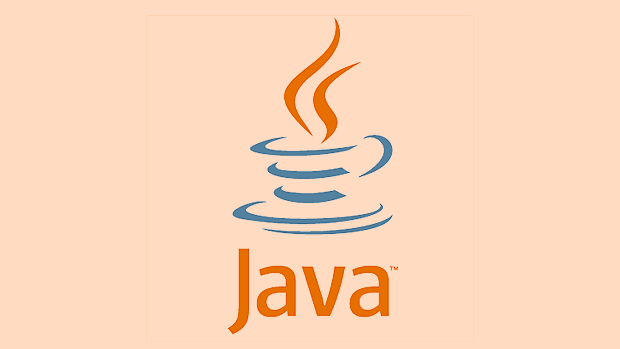Advanced Java Security Manager Configuration
Jul 16, 2025 am 01:59 AMThe core goal of Java Security Manager configuration is to control code permissions, prevent overprivileged operations, and ensure normal function operation. The specific steps are as follows: 1. Enable the security manager by modifying the security.manager settings in the java.security file and specifying the policy file with -Djava.security.policy; 2. When writing the policy file, you should clarify the CodeBase and SignedBy properties, and accurately set the permissions such as FilePermission, SocketPermission, etc. to avoid security risks; 3. Common problems such as if the class loading fails, the definitionClass permission is required, the reflection restriction requires ReflectPermission, and the thread operation requires ModifyThreadGroup permission, etc. can be checked through logs and supplemented one by one; 4. You can use JAR Signature combined with policy files to achieve finer granular permission control, and only high permissions are granted to the signature code.

Java's Security Manager is an important security mechanism in the Java platform, which is used to limit the behavior of programs at runtime. Although Security Manager is rarely configured directly in modern application development, it is still necessary to properly configure it in certain specific scenarios (such as running untrusted code, plug-in systems, or sandbox environments).

If you are trying to configure advanced Java Security Manager, the core goal should be: control the code permissions range, prevent overprivileged operations, and do not affect normal function operation .
1. Understand java.security files and policy files
Java's security manager relies on two key configuration files:

-
java.security: Located in the$JAVA_HOME/lib/security/directory, it is a global security attribute configuration file. - Policy file : Usually
java.policyor a custom.policyfile, used to define which code has what permissions.
Configuration suggestions:
-
Modify
security.managersettings injava.securityto enable the security manager:java -Djava.security.manager...
Use
-Djava.security.policy==your.policyto specify a custom policy file (a double equal sign indicates overwriting the default policy).
If you want to merge the default policy and the custom policy, use a single equal sign:
-Djava.security.policy=your.policy
Note: The path can be a local file path or a URL.
2. Tips for writing custom policy files
The core structure of the policy file is as follows:
grant [SignedBy "signer",] [CodeBase "URL"] {
permission java.io.FilePermission "/tmp/*", "read";
};Common configuration scenarios:
Restrict access to specific directories :
permission java.io.FilePermission "/home/user/data/-", "read,write";
Allow network connections but restrict ports :
permission java.net.SocketPermission "example.com:80", "connect,resolve";
Restrict loading of local libraries :
permission java.lang.RuntimePermission "loadLibrary.*", "";
Tips:
- The permission statement should be as specific as possible to avoid using wildcard characters (such as
"*"), otherwise it may cause security risks. - During the testing phase, permissions can be gradually tightened using loose strategies.
-
policytooltool can be used to assist in generating policy files.
3. Frequently Asked Questions and Countermeasures when Using Security Manager
After enabling Security Manager, you may encounter the following situations:
Class loading failed : Some frameworks (such as Spring and Hibernate) will generate classes dynamically, and the following permissions need to be added:
permission java.lang.RuntimePermission "defineClassInPackage.java.lang";
Reflection restricted : Security Manager prohibits access to private fields and methods by default. If reflection is required, consider granting:
permission java.lang.reflect.ReflectPermission "suppressAccessChecks";
Thread operation is rejected : Some applications need to create new threads, remember to add:
permission java.lang.RuntimePermission "modifyThreadGroup";
Common error check ideas:
- View
AccessControlExceptionexception information in the log. - Find the missing permission name and target resource.
- Add the corresponding
permissionline to the policy file. - Retest until no exception is thrown.
4. Advanced: Combining code signature to achieve fine-grained control
If your application needs to distinguish between trusted and untrusted code, you can use the JAR package signature policy file combination method.
The steps are as follows:
Signing JAR files using
jarsigner:jarsigner myplugin.jar myalias
Specify the permissions of the signer in the policy file:
grant SignedBy "myalias" { permission java.security.AllPermission; };
In this way, only signed plugins can obtain higher permissions, and those that are not signed can only run in a restricted environment.
Basically that's it. The configuration of the security manager is not complicated, but it is very easy to ignore details, such as permission name spelling, path format, whether it is recursive, etc. As long as you adjust the policy file step by step according to the error log, the expected results will eventually be achieved.
The above is the detailed content of Advanced Java Security Manager Configuration. For more information, please follow other related articles on the PHP Chinese website!

Hot AI Tools

Undress AI Tool
Undress images for free

Undresser.AI Undress
AI-powered app for creating realistic nude photos

AI Clothes Remover
Online AI tool for removing clothes from photos.

Clothoff.io
AI clothes remover

Video Face Swap
Swap faces in any video effortlessly with our completely free AI face swap tool!

Hot Article

Hot Tools

Notepad++7.3.1
Easy-to-use and free code editor

SublimeText3 Chinese version
Chinese version, very easy to use

Zend Studio 13.0.1
Powerful PHP integrated development environment

Dreamweaver CS6
Visual web development tools

SublimeText3 Mac version
God-level code editing software (SublimeText3)
 VSCode settings.json location
Aug 01, 2025 am 06:12 AM
VSCode settings.json location
Aug 01, 2025 am 06:12 AM
The settings.json file is located in the user-level or workspace-level path and is used to customize VSCode settings. 1. User-level path: Windows is C:\Users\\AppData\Roaming\Code\User\settings.json, macOS is /Users//Library/ApplicationSupport/Code/User/settings.json, Linux is /home//.config/Code/User/settings.json; 2. Workspace-level path: .vscode/settings in the project root directory
 How to handle transactions in Java with JDBC?
Aug 02, 2025 pm 12:29 PM
How to handle transactions in Java with JDBC?
Aug 02, 2025 pm 12:29 PM
To correctly handle JDBC transactions, you must first turn off the automatic commit mode, then perform multiple operations, and finally commit or rollback according to the results; 1. Call conn.setAutoCommit(false) to start the transaction; 2. Execute multiple SQL operations, such as INSERT and UPDATE; 3. Call conn.commit() if all operations are successful, and call conn.rollback() if an exception occurs to ensure data consistency; at the same time, try-with-resources should be used to manage resources, properly handle exceptions and close connections to avoid connection leakage; in addition, it is recommended to use connection pools and set save points to achieve partial rollback, and keep transactions as short as possible to improve performance.
 Mastering Dependency Injection in Java with Spring and Guice
Aug 01, 2025 am 05:53 AM
Mastering Dependency Injection in Java with Spring and Guice
Aug 01, 2025 am 05:53 AM
DependencyInjection(DI)isadesignpatternwhereobjectsreceivedependenciesexternally,promotingloosecouplingandeasiertestingthroughconstructor,setter,orfieldinjection.2.SpringFrameworkusesannotationslike@Component,@Service,and@AutowiredwithJava-basedconfi
 python itertools combinations example
Jul 31, 2025 am 09:53 AM
python itertools combinations example
Jul 31, 2025 am 09:53 AM
itertools.combinations is used to generate all non-repetitive combinations (order irrelevant) that selects a specified number of elements from the iterable object. Its usage includes: 1. Select 2 element combinations from the list, such as ('A','B'), ('A','C'), etc., to avoid repeated order; 2. Take 3 character combinations of strings, such as "abc" and "abd", which are suitable for subsequence generation; 3. Find the combinations where the sum of two numbers is equal to the target value, such as 1 5=6, simplify the double loop logic; the difference between combinations and arrangement lies in whether the order is important, combinations regard AB and BA as the same, while permutations are regarded as different;
 Python for Data Engineering ETL
Aug 02, 2025 am 08:48 AM
Python for Data Engineering ETL
Aug 02, 2025 am 08:48 AM
Python is an efficient tool to implement ETL processes. 1. Data extraction: Data can be extracted from databases, APIs, files and other sources through pandas, sqlalchemy, requests and other libraries; 2. Data conversion: Use pandas for cleaning, type conversion, association, aggregation and other operations to ensure data quality and optimize performance; 3. Data loading: Use pandas' to_sql method or cloud platform SDK to write data to the target system, pay attention to writing methods and batch processing; 4. Tool recommendations: Airflow, Dagster, Prefect are used for process scheduling and management, combining log alarms and virtual environments to improve stability and maintainability.
 Understanding the Java Virtual Machine (JVM) Internals
Aug 01, 2025 am 06:31 AM
Understanding the Java Virtual Machine (JVM) Internals
Aug 01, 2025 am 06:31 AM
TheJVMenablesJava’s"writeonce,runanywhere"capabilitybyexecutingbytecodethroughfourmaincomponents:1.TheClassLoaderSubsystemloads,links,andinitializes.classfilesusingbootstrap,extension,andapplicationclassloaders,ensuringsecureandlazyclassloa
 How to work with Calendar in Java?
Aug 02, 2025 am 02:38 AM
How to work with Calendar in Java?
Aug 02, 2025 am 02:38 AM
Use classes in the java.time package to replace the old Date and Calendar classes; 2. Get the current date and time through LocalDate, LocalDateTime and LocalTime; 3. Create a specific date and time using the of() method; 4. Use the plus/minus method to immutably increase and decrease the time; 5. Use ZonedDateTime and ZoneId to process the time zone; 6. Format and parse date strings through DateTimeFormatter; 7. Use Instant to be compatible with the old date types when necessary; date processing in modern Java should give priority to using java.timeAPI, which provides clear, immutable and linear
 Google Chrome cannot open local files
Aug 01, 2025 am 05:24 AM
Google Chrome cannot open local files
Aug 01, 2025 am 05:24 AM
ChromecanopenlocalfileslikeHTMLandPDFsbyusing"Openfile"ordraggingthemintothebrowser;ensuretheaddressstartswithfile:///;2.SecurityrestrictionsblockAJAX,localStorage,andcross-folderaccessonfile://;usealocalserverlikepython-mhttp.server8000tor







